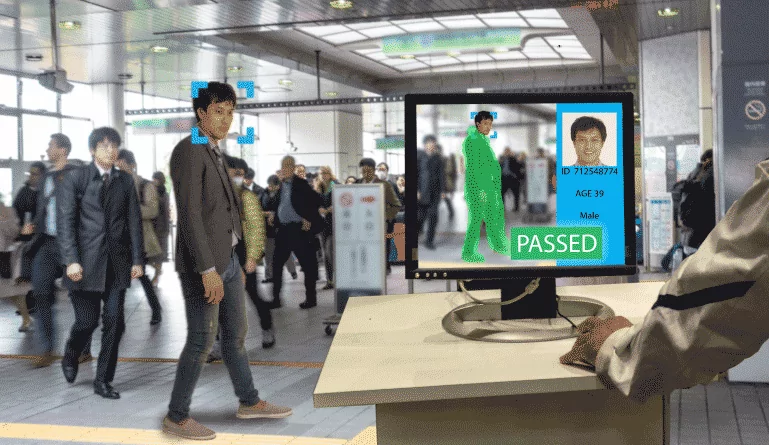When ChatGPT was released in the second half of 2022, word rapidly spread all over HR and recruitment circles. Who would be the very first to capitalize on the tool’s ever-increasing popularity?
Now, the answer is evident, although not in the manner we anticipated. Beamery, a global champion in talent management and HR technology, recently announced the official launch of TalentGPT. The product provides a “single assistant” that combines Beamery’s existing artificial intelligence (AI) with OpenAI’s GPT-4, along with additional large language models (LLMs).
Understanding the Meaning of TalentGPT
TalentGPT has existed in a sort of development and incubation phase for more than three years and strongly resembles the immensely popular ChatGPT.
The artificial intelligence system GPT, which stands for Generative Pre-trained Transformer, was created to generate human-like language constructs and comprehend human language patterns. It employs sophisticated machine learning algorithms to generate responses in natural language that are surprisingly eloquent.
This technology is currently employed for chatbots, AI-powered assistants, content creation, as well as language translation.
Looking at all the digital tools hiring managers and HR professionals already use to evaluate and screen applicants, compose job postings, and determine training paths, nearly all of these could be improved or reimagined with GPT tech. And that’s where TalentGPT technology steps in.
Here are the key characteristics of TalentGPT:
1. Early mover
TalentGPT is the first generative AI for human resources technology or HR tech on the planet, as per Beamery’s claims. The solution has been in the works for over three years, which predates the launch of OpenAI’s ChatGPT chatbot interface.
2. Conversational and personalized
This HR-generative artificial intelligence will be accessible as a unique virtual assistant. It will significantly personalize the user’s insights and recommendations and generate content that dynamically adapts to changing data in real time.
3. Research-backed
TalentGPT is based on the Beamery Talent Graph is an analytical database monitoring over 17 billion data points pertaining to candidates, companies, talents, and openings. Additionally, it adds generative AI via pre-trained LLMs to the company’s bias-free AI models.
How Does TalentGPT Work?
Since 2013, Beamery has offered employee lifecycle management solutions and services. In this instance, it is not surprising that they have chosen to employ AI technologies for HR goals. The company’s artificial intelligence capabilities, particularly its AI programs and bias-free methods, are well-known. However, Beamery is relatively new to the discipline of generative AI.
As previously stated, TalentGPT will serve as a virtual HR assistant. Not only will it be integrated into all of Beamery’s products, but it will also streamline and revamp all user experiences. It will save human resources professionals an enormous amount of time when finishing complex tasks.
Since late 2022, AI has become increasingly prevalent. Through platforms such as ChatGPT and apps for AI content generation, many users are becoming more acquainted with AI technologies. It is likely that further generative AI technologies are going to be launched for HR functions in the future.
For example, the talent platform, Gigged.AI — a company that connects independent contractors and freelancers with employers — has incorporated ChatGPT within its HR offering. Employers can now communicate with freelancers more effectively through the use of natural language to communicate their requirements, address queries, and offer feedback.
In other words, GPT technology works by making existing conversational interfaces in HR tech experiences more intuitive, refined, and effective. Let us understand this with an example.
Example of How TalentGPT Helps HR
The majority of the HR tools we use are in some way dependent on searching, indexing, and skill estimation. Almost every aspect of applicant monitoring systems, pre-hire evaluations, learning systems, and administrative duties can be enhanced or reimagined with GPT.
TalentGPT injects generative AI and LLMs into the user interface for accomplishing these tasks. In conversation with industry expert Josh Bersion, the President and Co-Founder of Beamery Sultan Saidov gave an illustrative example:
- Imagine a recruiter tasked with locating a software developer. They can request TalentGPT’s assistance in locating someone with a specific set of talents.
- The software would follow up with explanatory queries that would further specify the request. It will then display a series of panels below the conversation interface that will help you in refining your search.
- After tweaking the search, the back-end system employs AI to display the candidates you’ve whittled down to and assist you in making the best selection.
- Beamery’s AI models are adjusted for discrimination, whereas GPT is not by default. Using TalentGPT, recruiters can be guaranteed unbiased search results.
- TalentGPT can also detect internal candidates, aid you in adjusting the job title, and provide immediate data on benefits, salary, place of residence, and other key requirements.
Regardless of the accomplishments of most large HR platforms, their interfaces frequently aggravate users. This isn’t because companies do not work diligently to create user-friendly platforms. It’s just that the “page, scroll, as well as click” paradigm is limited and never reveals all of the features we may eventually require. Once a GPT-smart system is integrated or front-ended into such systems, it will be more efficient than ever.
What Can TalentGPT Do?
The generative AI’s biggest strength is talent sourcing and recruitment. Apart from this, the technology will:
1. Perform language-based tasks:
TalentGPT will collaborate with HR professionals to create job postings. It will customize job descriptions so that they are highly pertinent to the competencies that organizations lack and the skills that define top performers.
2. Personalize experiences for candidates and employees
TalentGPT will offer career advice and direction to workers based on their current skills. It will also generate email templates that are contextualized to the precise applicant/candidate pool the employer intends to reach.
3. Increase sourcing coverage
Generative AI may automate the initial evaluation of resumes and cover letters, sparing managers and human resources professionals a great deal of time and effort. This can aid in accelerating the recruiting process and facilitate the consideration of more candidates.
4. Enable objective hiring
In contrast to human recruiters, Beamery’s AI software is not discriminating based on gender, color, culture, or ethnicity. The company has undergone an independent audit – which is crucial, keeping in mind that GPT is not tested for bias. This may assist in ensuring that candidates are evaluated impartially and consistently.
5. Improve candidate experiences at low costs
Using generative AI in human resources can be more affordable than employing more employees or contracting recruitment services. Ultimately, innovations like TalentGPT will offer candidates with rapid responses and suggestions, thereby enhancing their entire recruiting process experience.
Is TalentGPT Secure?
As managers of personal and financial information, HR teams must pay special attention to the security aspects of artificial intelligence. TalentGPT enables applicants to set preferences regarding the use of artificial intelligence on their personal information by organizations. In addition, as previously stated, Beamery went through a third-party inspection of its artificial intelligence algorithm with the aim of better managing AI-related compliance and prejudice. Parity, an entity whose objective is to eliminate algorithmic inequality, completed the audit.
Beamery is able to mitigate risks usually associated with the implementation of ChatGPT as well as other additional models by implementing multi-purpose LLMs inside these bias-audited AI safeguards This prepares generative AI for more widespread use by enterprises and HR teams.
Conclusion
Although platforms like TalentGPT or ChatGPT offer an enhanced and seamless working environment for a variety of roles, it is changing the way in which jobs will be structured and allocated. Nearly 50% of companies will be replacing at least some workers with ChatGPT and its equivalents, as we reported in our article titled Will AI Replace Jobs? Here’s What Research Suggests.
The implications of GPT technology for the human resources industry are immense – from job reorganization to new HR productivity systems and brand-new user experiences. TalentGPT is only the beginning of what’s to come in the evolution of generative AI for HR.





